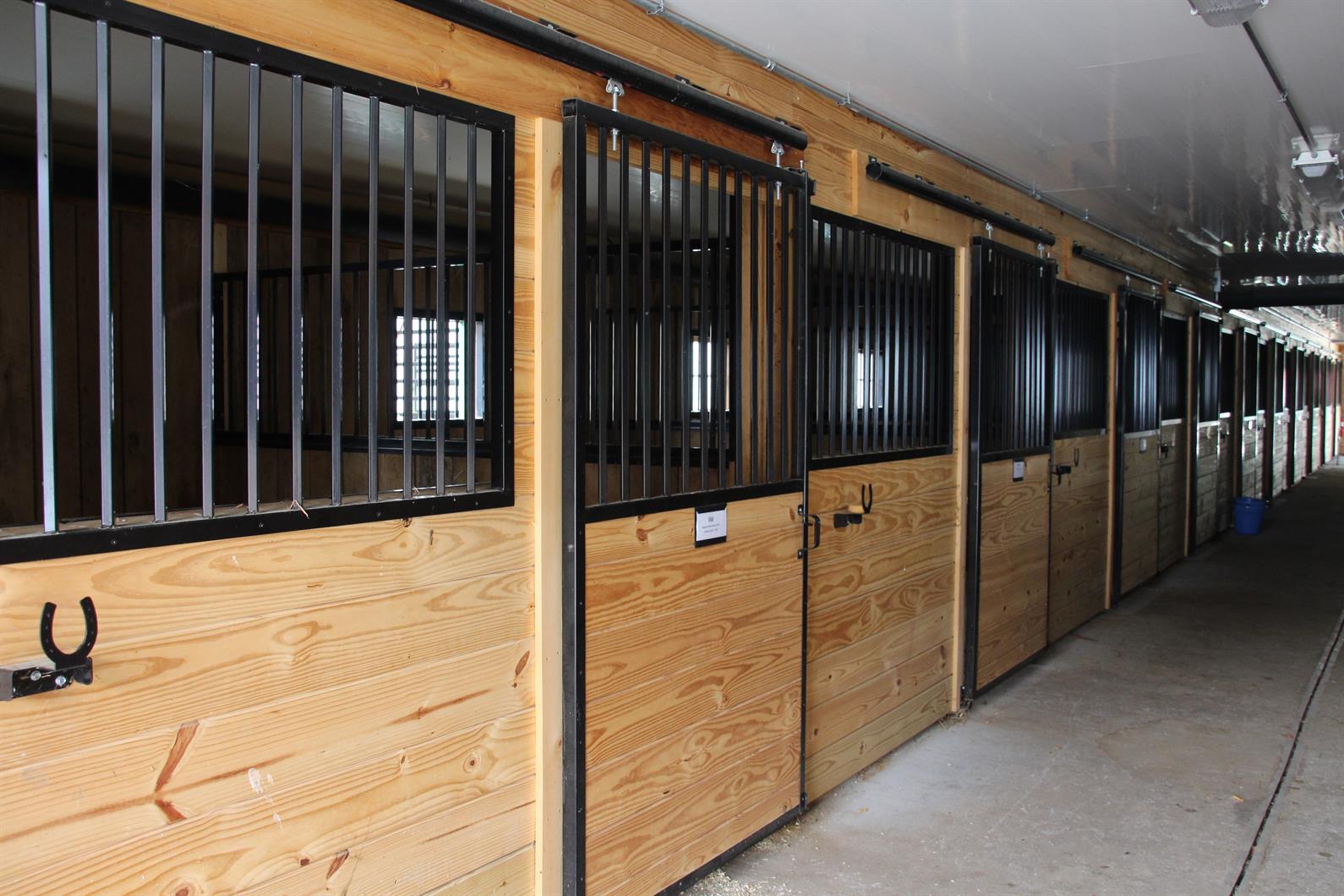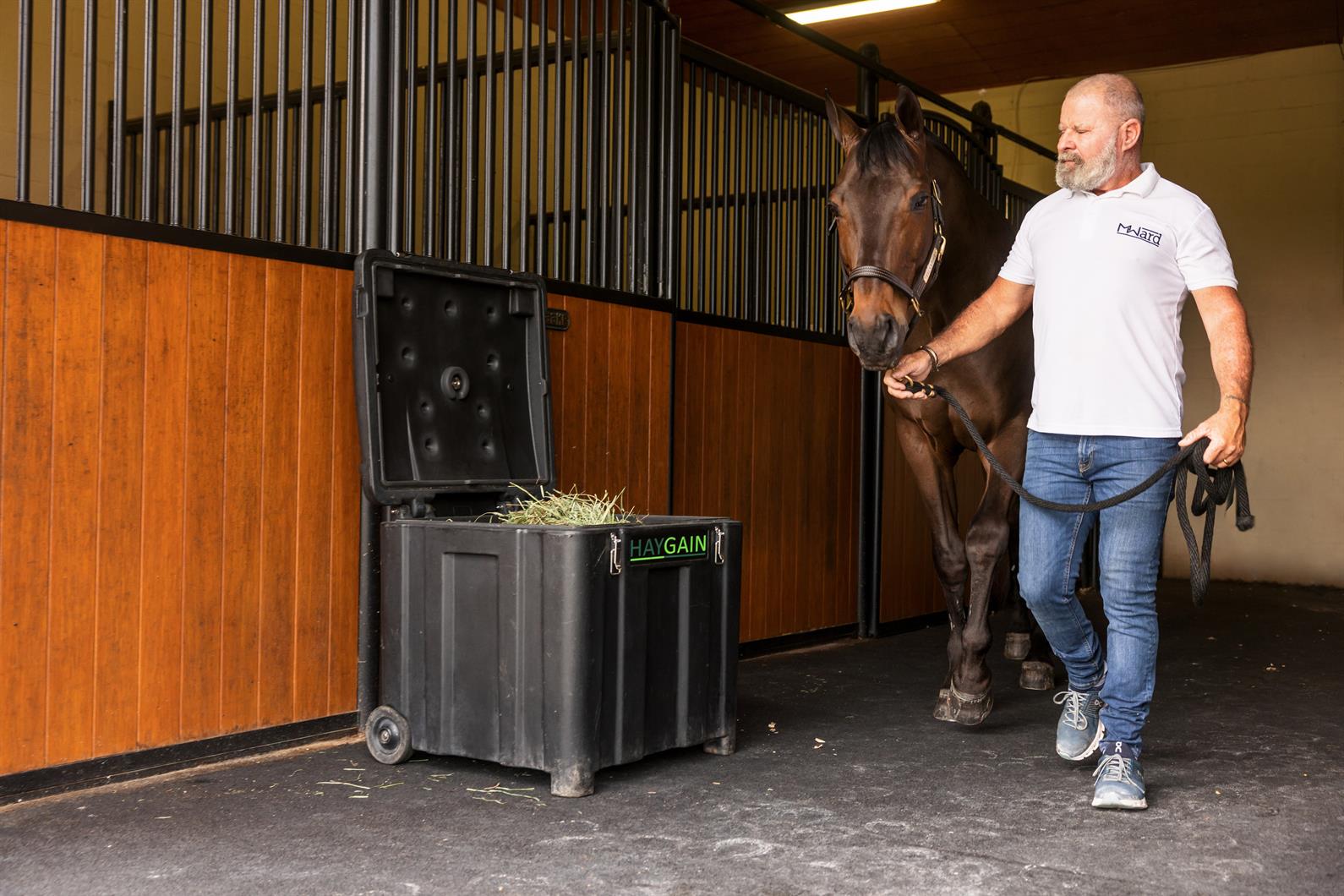It’s often said that we horse owners take better care of our horses’ health than our own. We pamper them and try our best to protect them from illness and injury. It’s easy to forget that their physiology was designed for a rugged life outdoors in the wild.

Photo: Taya Dianna/Unsplash
Indoor life is convenient and sometimes necessary for many of our horses, but it’s not their natural habitat. As herd animals, horses have physical, physiological, and emotional needs that are naturally met living freely outdoors. Confinement can affect everything from respiratory and digestive heath to joint function and overall well-being.
The good news is that modern equine science provides many ways for our horses to live as naturally as possible in a stabled environment.
Four Tips for a Healthy Indoor Season
Ventilate. Even when it’s cold out, let some air flow into the stable to remove or dilute airborne particles, which are a major respiratory risk in the barn environment.
Horses are comfortable in much lower temperatures than people are. Provided there’s no chilling wind or significant moisture involved, temperatures around 0° are tolerable for most healthy horses. Between 18° and 59° is considered comfortable for most horses.
Horses’ long winter coats are designed to trap air against the skin, and this creates a layer of insulation against the cold. Body-clipped horses can be blanketed to maintain warmth.
Good ventilation is a key consideration in the early stages of new barn design or renovation of an existing barn. Creating exit points for warm air to rise helps remove exhaled moisture and the active gases contained within it.
The more the difference in temperature between cold outside and warm inside air, the more powerful the effect of “thermal buoyancy” in keeping the barn air clean and healthy. Positioning barn windows and doors to take advantage of the site’s prevailing breezes sets the stage for effective, natural ventilation.
Leaf Blowers and Other No-Nos. Not using dust blowers around horses seems like a no-brainer, but veterinarians say that advice often goes unheeded. Dust-stirring activities like cleaning stalls and raking aisles should be done when the horses are outdoors, too.
The impact of barn activity on air quality was clear in 2014 research (Ivester et al., 2014) that compared daytime and nighttime dust levels. Airborne particle concentrations during the day were nearly double that of concentrations measured at night.
Ensure that everyone involved in your horses’ care and barn maintenance understands the importance of minimizing dust-stirring activities when horses are inside. Consider signage in the barn to keep the message top of mind.
Tackle Hay and Bedding. These are the biggest sources of harmful respirable dust in the stabled environment.
Hay is critical to our horses’ health because their digestive system was designed to process and absorb nutrients from long stemmed forage. However, hay is naturally “dirty” with harmful microscopic particles.
Hay is grown in soil, harvested with heavy equipment, and often hauled long distances and stored for long periods. Before it reaches our horses, it picks up respirable dust in the form of mold, bacteria, and other allergens.
We can’t see these particles, but they make their mark deep in the lungs, causing irritation and

Photo: Shelley Paulson Photography
inflammation that lead to conditions on the equine asthma spectrum. The spectrum ranges from mild and moderate inflammatory airway disease that can be elusive to diagnose to debilitating cases of severe equine asthma.
Dusty hay and bedding are especially harmful, because our horses spend much of their day with their nostrils hovering over both.
Consider virtually dust-free steamed hay. Haygain high-temperature steaming has been proven to remove up to 99% of the respirable dust found even in hay of desired nutrient content. This “dust” includes mold, bacteria, and other allergens.
Low-dust bedding can also help, and there are several products that provide cushion and absorbency. Cushioned flooring that requires minimal bedding is ideal, especially sealed flooring that prevents urine seeping to and accumulating at the stall sub-base. Such surfaces help reduce ammonia, another respiratory irritant.
Prolong Meal Times. The horse’s digestive process was designed for spending most of the day grazing small bites of forage while roaming. That’s why horses’ stomachs constantly produce acid that helps break down that forage for absorption. If there’s no forage in the tummy, however, the acid can irritate the stomach lining and cause ulcers.
Slow feeders approximate nature’s design to allow a horse to absorb nutrients while trickle feeding. More time eating means more chewing, which prompts more saliva that helps buffer the stomach from those acids. Four hours is generally considered the longest horses should go without something in their stomachs.
Plus, eating for more hours is most horses’ favorite way to spend the day. There’s less time for boredom behaviors or food-scarcity stress.
Learn more from Haygain’s free e-book, “Optimizing the Stable Environment.” Whether you're set on improving an existing facility or designing your dream stable, it offers the latest horse management science to support your goals of providing the very best for your horse. Read and download the free e-book here.


